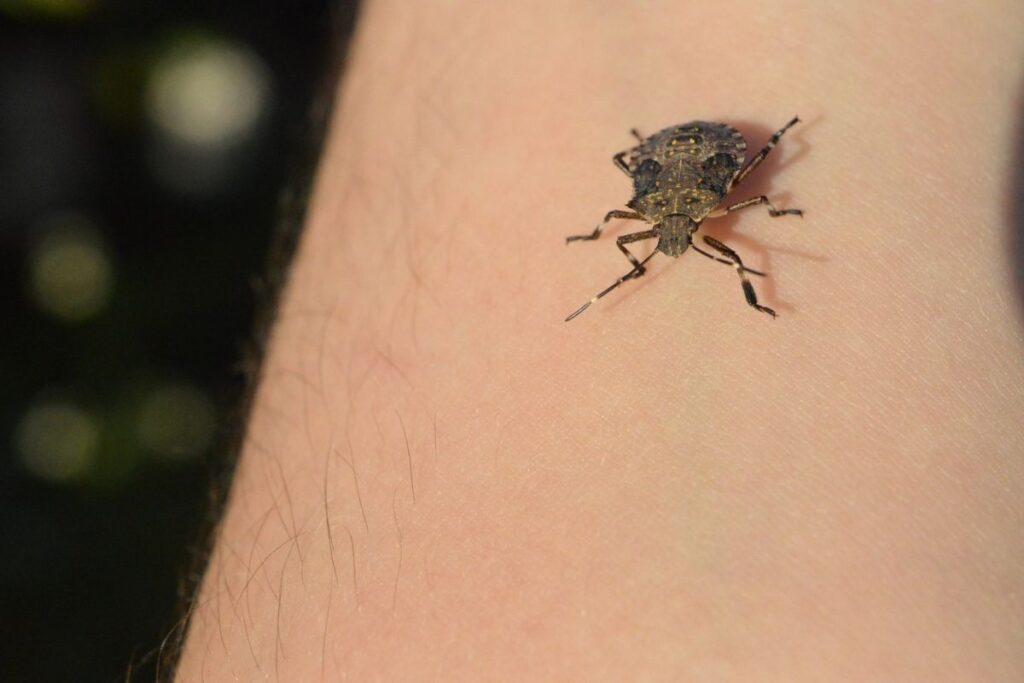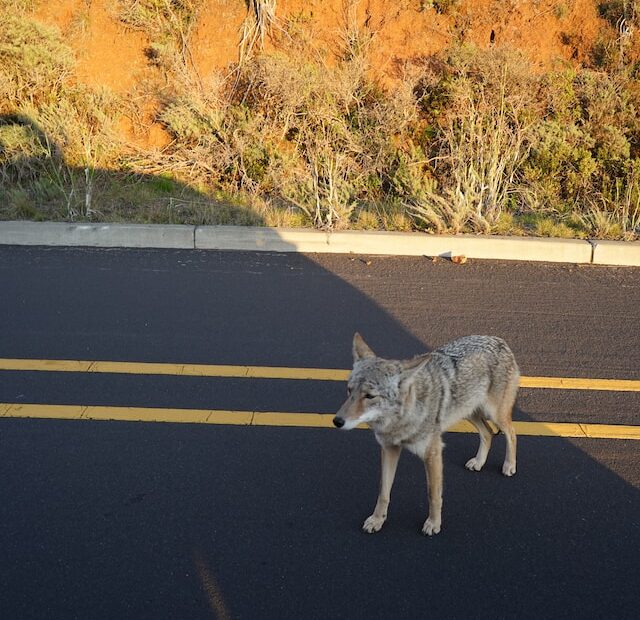The big, burly men carried small, anxious dogs. Sounds like a line from an old typing drill book, but it’s not. These days, it’s a scene from every pet owners’ playbook.
The big, burly men carried small, anxious dogs.
If you don’t want to play tug-o-war with a coyote, you now carry your dog through certain sections of the park. In fact, keep your head on a swivel when you walk any dog smaller than a Labrador. Coyotes like the looks of our hors d’oeuvres on a leash. They’ll even take a run at something much larger. Although more commonly seen at night, coyotes no longer require cover of darkness when they hunt for their next meal. The mid-day sight of a swaggering coyote on a major thoroughfare is increasingly common. And sometimes, after dark, you’d think you were in a Jack London novel listening to creatures of the night set upon a slow-moving duck or errant feline.
Coyotes aren’t native to Vancouver. They started showing in the 80s and, now, well, now they’re coming for our lunch money. We tend to be fascinated by them and, as they look so much like our beloved dogs, we tend to be a little sympathetic with them. Don’t, however, be so softhearted with them as to feed them; there’s a $500 fine for that.

May is Invasive Species Action month. The Invasive Species Council of BC wants us all – hikers, gardeners, boaters – to come to a better understanding of what qualifies as an invasive species and how best to manage these invaders. I spoke with the Executive Director of the council, Gail Wallin, earlier this week. She opened our conversation by explaining that daffodils and crocuses are not native to BC but that they don’t qualify as invasive species. Invasive species are ones that cause trouble, usually to horticulture or agriculture. Generally speaking, they have no known, local predators. Failure to recognize and respond to the threat they represent can cause catastrophic results, environmentally and economically.
At the moment, it’s stink bugs that are causing a stink.
At the moment, it’s stink bugs that are causing a stink. Maybe you’ve noticed thumbnail-sized, shield-shaped, brown, beetle-like creatures showing up in your home of late? Now, there are stink bugs and there are stink bugs. If yours have white bands on their antennae, that’s the latest invader, the brown Marmorated stink bug, that’s wreaking havoc on the west coast and not the indigenous variety. The council started getting reports of this new stink bug showing up in the Fraser Valley back in 2015. By 2022, they were getting more reports of the brown marmorated stink bug than they’d had for any other invasive species since the council started back in 2002. Likely having hitchhiked in from Asia, this new stink bug is flourishing in our temperate climate. It inflicts its damage on a wide variety of plants, particularly causing damage to orchards and fruiting plants.

The best thing to do if you discover these bugs is to drop them into frothy, soapy water. This method of dispatch is swift, environmentally-friendly and suppresses the release of the odour stink bugs are famous for. If you encounter a patch of their small, greenish circular eggs on the underside of a leaf, squash those. According to Ms. Wallin, citizens have the capacity to make a big difference in this campaign. The example she uses is that of the foliage-destroying Japanese Beetle. It was first noticed in the Lower Mainland back in 2017. The federal government Food Inspection Agency along with other agencies, launched an eradication campaign that captured 8,8276 of these beetles in 2018. Last year, a similar crusade netted only 201 beetles, revealing that the allied offensive was effective.
From European and eastern cottontail rabbits, to red slider turtles; European fire ants to the asian giant hornet, globalization means that we’re under constant attack from unfamiliar predators. As in all things, an ounce of prevention goes a long way but ongoing citizen vigilance can also play an important role. So, saddle up and mend those fences. Just know that when you’re out with a flashlight at night inspecting the underside of leaves, that there’s a chance a wily coyote in the shadows, picking his teeth and wondering what the hell you’re up to.
This week’s question for readers:
WHAT ARE YOUR ENCOUNTERS WITH INVASIVE SPECIES AND HOW DO YOU MANAGE THOSE?
Leave your Comments below!
Register for The Plain Jane newsletter and stay up to date with upcoming contests.
Submissions to last week’s question:
Do you encourage or discourage people to bring pets when they visit?
I just read your latest article re your grandfather. I almost doubled up with laughter. The memories came flooding back. One rather bizarre memory is when he arrived at Mike’s wedding. He, as usual, brought the menagerie with him; three of the most dishevelled mutts you ever saw. I don’t remember any names for the dogs, other than “dog”. He sat amongst the wedding guests with the dogs running amok! He did indeed have on his usual tweed jacket, chino pants and trousers, tartan tie, eye glasses on a string tucked in his shirt pocket and his deerstalker hat on his knee. While the wedding vows were being exchanged you could hear yaps and yelps from the menagerie. Grandfather just sat there as it was all perfectly normal. Most of the wedding photos included a mutt or two in them. At the time I was horrified but I also knew that, being part of the McDonald clan, that this was normal behaviour and was to be expected. Now, so many years later, we still have a good laugh about grandfather George and the menagerie!
Judy McDonald (yes, my aunt!)
For me any size or type of pet is welcome at my home. I simply love animals. So long as they’re house trained as well as their owners.
Bruce Shaw
I discourage people visiting from bringing animals, especially dogs, for several reasons: Our main floor area has very old, very worn and never-to-be-sanded again fir flooring. Even our cats claws have done a number on them. As already mentioned we have cats, two of whom actually, don’t even like each other, let alone other animals. The other one seems to have an anxiety disorder. I’m an avid gardener with extensive garden beds. Dogs and gardens are not a match made in heaven. Even an older, well-behaved dog will wander into the flower beds and wreak havoc with the plants, and it seems their owners are loath to keep them restrained.So, unless they keep the dogs downstairs and leashed if outside, it’s just a no-go.
Terri Clark-Kveton
I was dating a man with two dogs. He presumed to bring his dogs everywhere. They were pleasant enough creatures but they behaved territorially in my home. He thought nothing of them climbing on my sofas, tracking in dirt, and being aggressive with my family member’s dogs or people walking by the house. He never seemed to notice that people did wince when he rang the doorbell with his dog alongside him. I began to notice that he was self-indulgent and more than a bit tone-deaf. I once thought to test him by bringing a dog I was dog-sitting to his house. The gate did not swing both ways. He didn’t like that one bit. The relationship soured quite quickly.
Name withheld
I kind of inherited a cat that used to accompany a friend when she visited. I always thought it was odd to bring a cat anywhere but she said the cat craved companionship and was lonely when she was at work. This led to the cat coming to my house as I worked from home. After a while, I began to fall under the cat’s spell … which is saying a lot as I didn’t even like cats. That cat is now my cat. He settled in and decided he preferred living with me. Consider this a warning: you can fall in love with a visiting pet if you’re not careful!
F. Johnson
